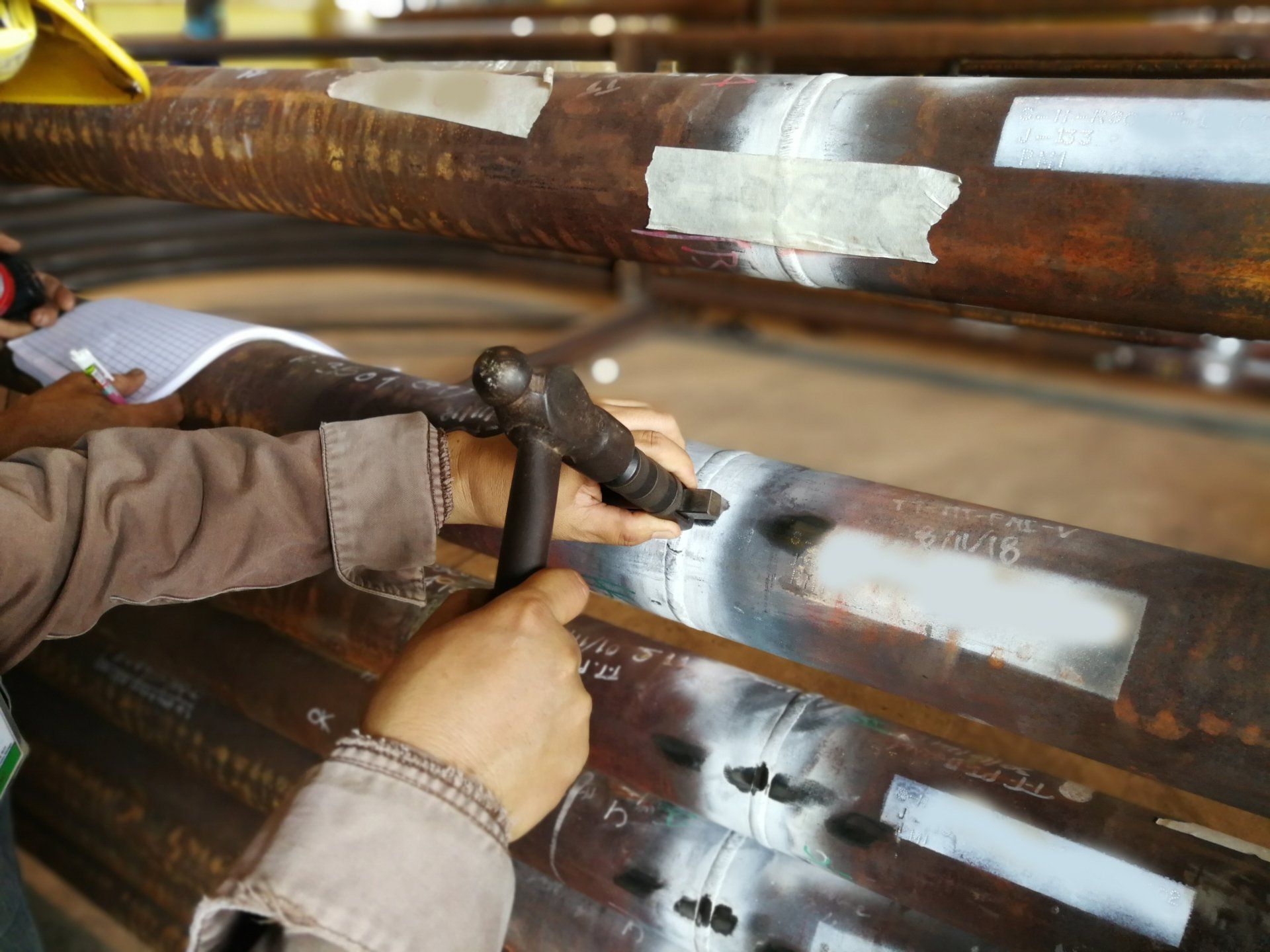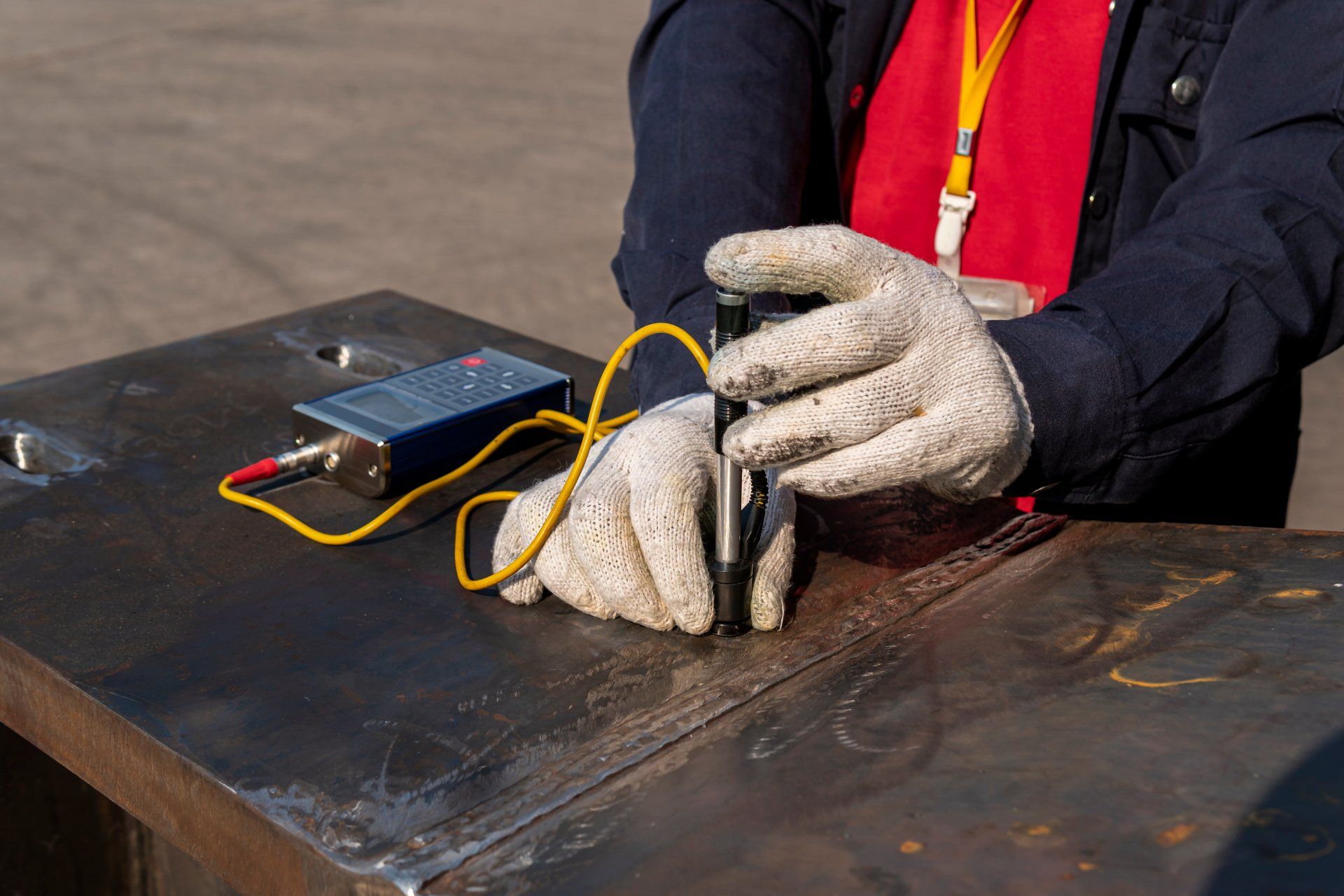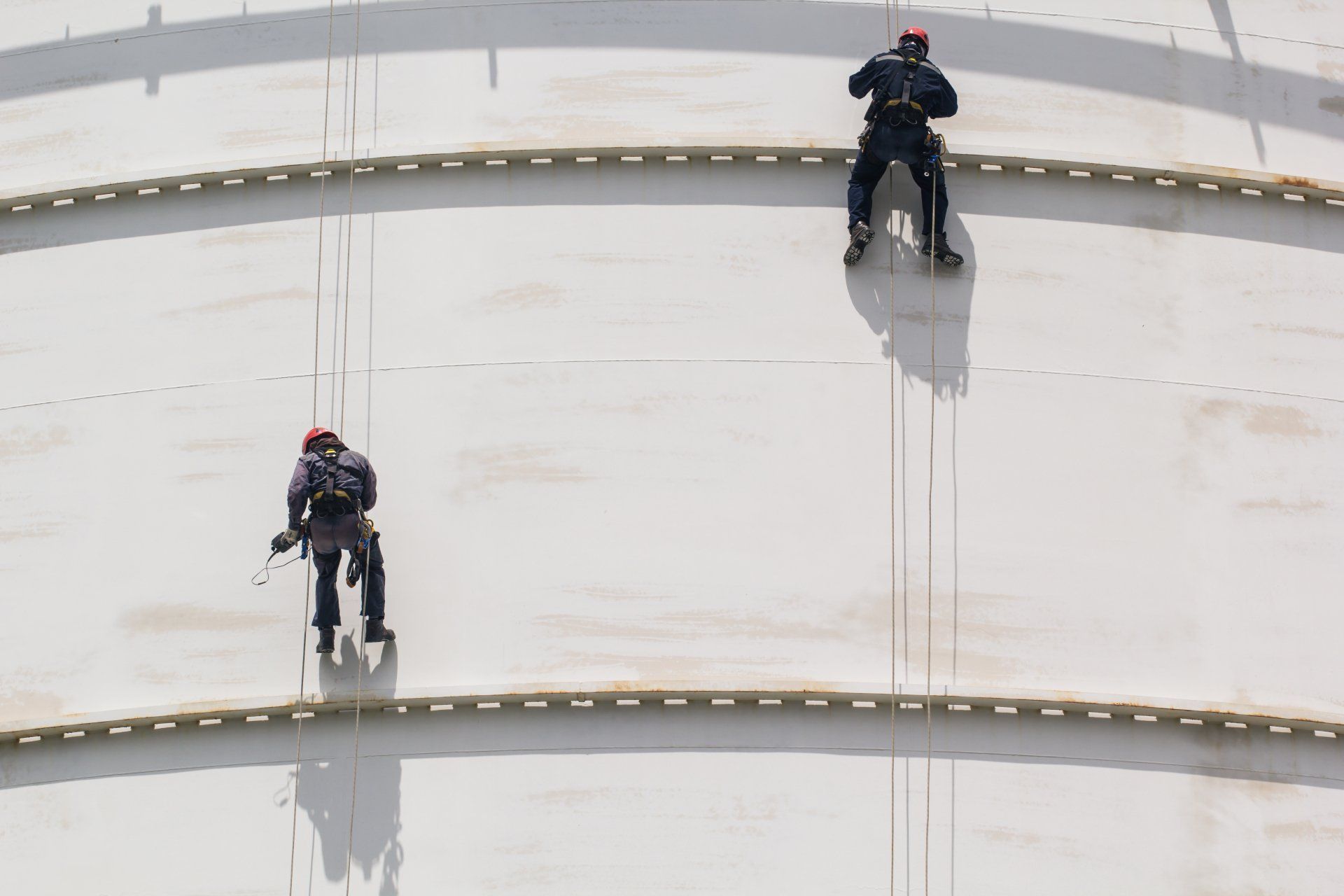Hardness Testing
Hardness Testing (HT) is an NDT method used to measure hardness of materials and is performed on ferrous and non-ferrous materials, and various non-metallic materials.
Common hardness testing applications include welds, weld overlays, weld heat affected zone (HAZ), castings, forgings, fittings, piping, stress relieved material, machined parts, pressure vessels, structural steel, and materials and components requiring NACE MR0175 certification. TriQuest NDT's portable equipment provides rapid hardness testing results, and can be quickly calibrated from known hardness calibration test pieces when performing tests on different types of materials.
The most common methods include:
- The Brinell hardness test is achieved by applying a load between a known bar hardness material and a ball located within the anvil to the surface of the tested material. The diameter of the resulting permanent impressions in the tested material and the known hardness bar are measured and the Brinell Hardness Number (BHN) is calculated.
- The MIC 10 hardness test is an electronic micro-hardness instrument which measures the material hardness based on the analysis of resonance frequency known as Ultrasonic Contact Impedance which measures the hardness value based on changes to the relative size of the micro indentation area.
- The Equotip hardness test measures the material hardness based on an electronic analysis of impact and rebound velocities.
- The Rockwell hardness test is based on the indentation hardness of a material. The Rockwell test determines the hardness by measuring the depth of penetration of an indenter under a measured load. This method, unless converted from a portable electronic instrument, is performed on stationary equipment.
- The Vickers hardness test is determined by measuring the indentation in the test material from an application of a given force between 1 gram as a micro-hardness to 50 Kg as a macro-hardness.
Testing limitations per method include:
- The Brinell hardness tests is limited to thicker materials, and is not recommended for weld heat affected zones, or on surfaces where indentations may affect machined surfaces.
- The MIC 10 measurements require considerable surface finish to a near mirror-like polish finish.
- The Equotip is limited to thicker materials greater than 0.500".
Electronic hardness testing equipment should not be used on materials greater than approximately 200°F (93.3°C)






